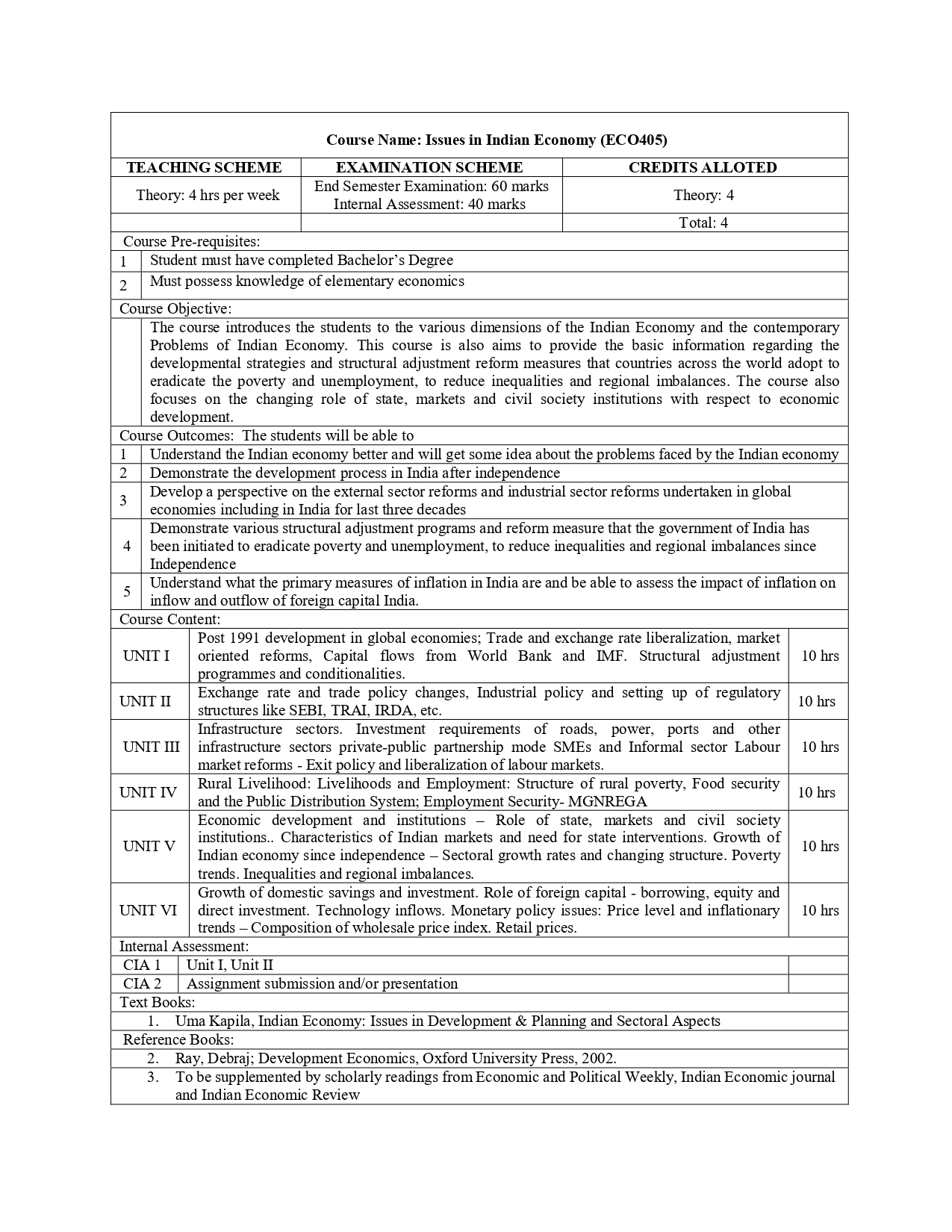
|
Course Objective: |
||
|
|
The course introduces the students to the various dimensions of the Indian Economy and the contemporary Problems of Indian Economy. This course is also aims to provide the basic information regarding the developmental strategies and structural adjustment reform measures that countries across the world adopt to eradicate the poverty and unemployment, to reduce inequalities and regional imbalances. The course also focuses on the changing role of state, markets and civil society institutions with respect to economic development. |
|
|
Course Outcomes: The students will be able to |
||
|
1 |
Understand the Indian economy better and will get some idea about the problems faced by the Indian economy |
|
|
2 |
Demonstrate the development process in India after independence |
|
|
3 |
Develop a perspective on the external sector reforms and industrial sector reforms undertaken in global economies including in India for last three decades |
|
|
4 |
Demonstrate various structural adjustment programs and reform measure that the government of India has been initiated to eradicate poverty and unemployment, to reduce inequalities and regional imbalances since Independence |
|
|
5 |
Understand what the primary measures of inflation in India are and be able to assess the impact of inflation on inflow and outflow of foreign capital India. |
|
|
Course Content: |
||
|
UNIT I Post 1991 development in global economies; Trade and exchange rate liberalization, market oriented reforms, Capital flows from World Bank and IMF. Structural adjustment programmes and conditionalities. |
10 hrs |
|
|
UNIT II Exchange rate and trade policy changes, Industrial policy and setting up of regulatory structures like SEBI, TRAI, IRDA, etc. |
10 hrs |
|
|
UNIT III Infrastructure sectors. Investment requirements of roads, power, ports and other infrastructure sectors private-public partnership mode SMEs and Informal sector Labour market reforms - Exit policy and liberalization of labour markets. |
10 hrs |
|
|
UNIT IV Rural Livelihood: Livelihoods and Employment: Structure of rural poverty, Food security and the Public Distribution System; Employment Security- MGNREGA |
10 hrs |
|
|
UNIT V Economic development and institutions – Role of state, markets and civil society institutions.. Characteristics of Indian markets and need for state interventions. Growth of Indian economy since independence – Sectoral growth rates and changing structure. Poverty trends. Inequalities and regional imbalances. |
10 hrs |
|
|
UNIT VI Growth of domestic savings and investment. Role of foreign capital - borrowing, equity and direct investment. Technology inflows. Monetary policy issues: Price level and inflationary trends – Composition of wholesale price index. Retail prices. |
10 hrs |
|
|
Text Books: |
||
|
1. Uma Kapila, Indian Economy: Issues in Development & Planning and Sectoral Aspects |
||
|
Reference Books: |
||
|
2. Ray, Debraj; Development Economics, Oxford University Press, 2002. |
||
|
3. To be supplemented by scholarly readings from Economic and Political Weekly, Indian Economic journal and Indian Economic Review |
||
- Teacher: Department of Economics